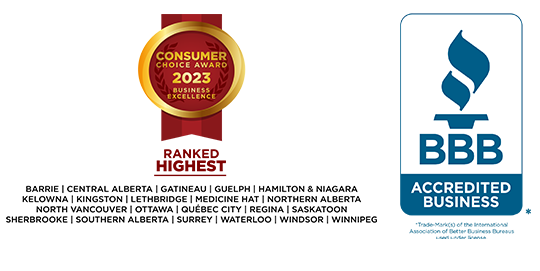Debt and divorce: A financial fresh start
Helping you better navigate dividing debt after divorce
Divorce is a painful process for everyone involved. Add the financial stress of reconciling debt to the equation and it can quickly become overwhelming.
By understanding what debts each spouse is responsible for paying after a divorce, each of you will be better equipped to handle the outcome and move towards a financial fresh start.

Who is responsible for what?
While there are many types of debt that may be examined during divorce proceedings, there are two basic types that are most common: joint and individual.
Individual debt
Individual debts are those that only one party has applied and signed for. These debts could include credit cards, vehicle loans or financing, income tax debt, and personal loans which were acquired either before or during the marriage.
In a divorce, only the person who signed the loan contract is responsible for the debt’s repayment. Even if your spouse files for bankruptcy or a Consumer Proposal, creditors cannot come after you to repay a debt that is only in their name.
Joint debt
A joint debt is one in which both parties have co-signed for the loan. These can include lines of credit, credit cards, vehicle loans, and mortgages.
Regardless of who contributed to the debt during the marriage, you and your spouse are equally responsible for its repayment if both names are on the contract.
In the case of a default, creditors can take actions against either or both of you to recover the debt.
What happens if one spouse can’t afford their debt?
The financial burden of carrying debts after divorce can be exacerbated if one or both parties is not in a position to repay their portion of the debt after separation.
A few of the options that are available if a spouse is unable to contribute to debt repayment after divorce include: Bankruptcy and Consumer Proposal.
Bankruptcy
Essentially a clean financial slate, Bankruptcy provides immediate relief from unsecured debts such as credit card debt. A Licensed Insolvency Trustee (LIT) can advise of the implications of filing a Bankruptcy such as assets that you can keep, duties that need to be completed during the process, and the impact on your credit rating. Having a conversation with a LIT can help to determine whether this is the best solution or whether there are other options that can be considered.
Where there is joint debt, if one spouse files for Bankruptcy following separation, creditors will expect the other party to continue repaying the full amount of the debt. Apart from paying the joint debts in full, another solution for the second spouse is to explore either a Bankruptcy or Consumer Proposal (discussed below).
Note: Bankruptcy does not eliminate spousal or child support payments.
Consumer Proposal
Unlike Bankruptcy, filing a Consumer Proposal allows you to hold onto more of your assets while working towards paying off debts. Instead, you will make a fixed monthly (or one-time) payment amount that will be decided on between you and your creditor that will not change depending on income. A consumer proposal can assist with stopping interest from accruing, setting one fixed monthly payment that is manageable and often can result in a reduction of the total debt to be repaid.
Consumer Proposals have less of an effect on your credit score and will only stay on your record for three years after its completion.
How can spouses avoid financial conflict?
- Limit joint debts wherever possible (e.g., keep credit cards separate, have a clear objective when co-signing for debts and agree on the specific use cases).
- Make space to discuss money throughout the relationship and have a budget that both partners are committed to. One partner may have more involvement with managing the household finances, but both partners should be familiar with the household budget and debts. Money is one of the top sources of relationship conflict, but it doesn’t have to be…
- Be proactive about identifying debts and other financial challenges as the relationship winds down. The sooner you can address issues, the more options both spouses will typically have available to them.
Reach out early on
Going from two incomes to one can make it much more difficult to pay down debts, especially high-interest ones, and it is not uncommon for one or both parties to become insolvent after separation.
If only one spouse files for Bankruptcy or Consumer Proposal, this would, at best, leave the other with the burden of paying down any joint debts on their own. It could also, unfortunately, result in the second spouse also filing a Bankruptcy or Consumer Proposal.
Regardless of the situation you find yourself in at the time of separation or divorce, a Licensed Insolvency Trustee can help you better understand your options and personal responsibility. Contact us for a Free Confidential Consultation to discuss your financial situations and the options available to help you minimize the financial stress and consequences during this difficult time.
Whether it’s Bankruptcy, Consumer Proposal, debt consolidation or other debt solutions, MNP professionals are ready to help you start fresh and gain financial freedom.

